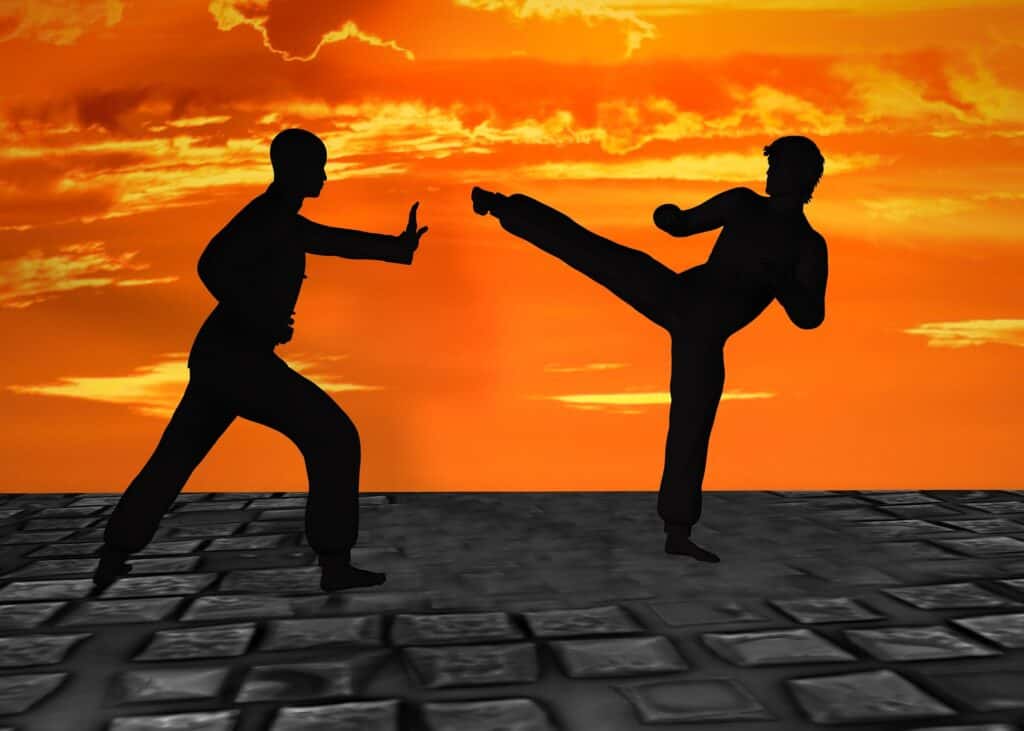
With the rise of mixed martial arts, many practitioners are looking to expand their skillset and become more well-rounded fighters. Taekwondo cross-training is an excellent way to achieve this, offering numerous benefits of multiple martial arts that can enhance one’s skills. By incorporating other martial arts into their training, practitioners can improve their taekwondo with other styles, gaining a competitive edge and improving overall performance.
Improving taekwondo with other styles can be a game-changer for practitioners, allowing them to develop new techniques and strategies. The benefits of multiple martial arts are numerous, and taekwondo cross-training is an effective way to experience these benefits firsthand. Whether you’re a seasoned practitioner or just starting out, combining taekwondo with other martial arts can help take your skills to the next level.
Understanding the Fundamentals of Taekwondo Cross-Training
Taekwondo practitioners often explore cross-training in martial arts to enhance their skills and create a unique system. By combining taekwondo with other martial arts, such as boxing or jiu-jitsu, practitioners can develop a well-rounded approach to self-defense and combat sports. The concept of cross-training involves integrating different styles to create a hybrid system that leverages the strengths of each style.
One of the key benefits of cross-training is the ability to improve overall technique and strategy. For example, taekwondo vs. MMA training can help practitioners develop a stronger kicking game, while also learning effective hand techniques and grappling skills. The following are some benefits of cross-training in martial arts:
- Improved technique and strategy
- Increased physical fitness and conditioning
- Enhanced mental toughness and discipline
- Exposure to different training methods and styles
When considering cross-training, it’s essential to understand the fundamentals of each style and how they can be integrated. Taekwondo, with its emphasis on kicking techniques, can be combined with martial arts that focus on hand techniques, such as boxing or jiu-jitsu. By understanding the strengths and weaknesses of each style, practitioners can create a comprehensive training program that meets their needs and goals.
Ultimately, cross-training in martial arts offers a wide range of benefits, from improved technique and physical fitness to enhanced mental toughness and discipline. By exploring different styles and integrating them into a comprehensive training program, taekwondo practitioners can take their skills to the next level and achieve their goals in the world of martial arts.
| Martial Art | Focus | Benefits |
|---|---|---|
| Taekwondo | Kicking techniques | Improved kicking power and speed |
| Boxing | Hand techniques | Enhanced hand speed and coordination |
| Jiu-jitsu | Grappling and ground fighting | Improved grappling skills and submission techniques |
The Physical and Mental Benefits of Training Multiple Martial Arts
Training in multiple martial arts, such as taekwondo and jiu-jitsu, can have numerous physical benefits. Practitioners can improve their cardiovascular endurance, increase strength and flexibility, and enhance coordination and balance. By combining taekwondo with other martial arts, like boxing for taekwondo practitioners, individuals can become more well-rounded athletes.
Some of the key benefits of cross-training include:
- Improved overall physical fitness
- Enhanced mental toughness and discipline
- Increased self-awareness and self-confidence
- Better coordination and balance
For example, taekwondo practitioners who also train in jiu-jitsu can improve their ground game and submission skills, while those who train in boxing can enhance their punching technique and hand-eye coordination. By incorporating different martial arts into their training, practitioners can stay motivated and challenged, reducing the risk of plateaus and injuries.
Ultimately, training in multiple martial arts can lead to a more holistic and balanced approach to fitness and self-improvement. By exploring different disciplines, such as taekwondo and jiu-jitsu, or boxing for taekwondo practitioners, individuals can discover new skills, build confidence, and achieve a higher level of overall wellness.
Common Challenges When Mixing Taekwondo with Other Styles
When combining Taekwondo with other martial arts, practitioners often encounter technical differences that can be challenging to overcome. For instance, Taekwondo emphasizes kicking techniques, while other styles like muay thai emphasize striking with the hands and feet. Understanding these technical differences is crucial to adapting training and creating a unique system. One of the best martial arts combinations is taekwondo vs. muay thai, as it allows practitioners to leverage the strengths of each style.
Some common challenges include:
- Technical differences: As mentioned, different styles have distinct techniques, which can be difficult to integrate.
- Training methods: Various styles have unique training methods, which can be challenging to combine.
- Philosophical differences: Different styles often have distinct philosophical approaches, which can be difficult to reconcile.
To overcome these challenges, practitioners can focus on finding the best martial arts combinations that suit their needs. By understanding the strengths and weaknesses of each style, including taekwondo vs. muay thai, practitioners can create a well-rounded system that enhances their skills. With patience, dedication, and the right approach, practitioners can successfully integrate multiple styles and achieve their goals.
Taekwondo and Brazilian Jiu-Jitsu: A Powerful Combination
Combining taekwondo with Brazilian jiu-jitsu creates a well-rounded system, offering a strong foundation in kicking techniques and expertise in ground fighting and submission holds. This combination is particularly effective in mixed martial arts competitions, where practitioners can defend against takedowns and submissions.
By incorporating jiu-jitsu into their training, taekwondo practitioners can improve their overall skills and become more versatile fighters. Some key benefits of this combination include:
- Improved ground fighting skills
- Enhanced submission defense
- Increased overall versatility
Many successful mixed martial artists have combined taekwondo and jiu-jitsu to achieve great results. For example, fighters like Anderson Silva and Lyoto Machida have used this combination to dominate in the UFC.
Here is a comparison of the two martial arts:
| Martial Art | Focus | Techniques |
|---|---|---|
| Taekwondo | Kicking techniques | Kicks, punches, blocks |
| Brazilian Jiu-Jitsu | Ground fighting and submission holds | Chokes, joint locks, sweeps |
By combining taekwondo and jiu-jitsu, practitioners can create a powerful and well-rounded system that prepares them for any situation in mixed martial arts competitions.
Enhancing Your Striking Game: Taekwondo Meets Boxing
Taekwondo practitioners can improve their striking game by incorporating boxing techniques into their training. Boxing provides a strong foundation in hand techniques, including punching and defense. By combining Taekwondo with boxing, practitioners can improve their overall striking ability and become more effective in competitions.
One of the key benefits of incorporating boxing into Taekwondo training is the improvement of hand techniques. Boxing for taekwondo practitioners can help to increase speed, agility, and power. In comparison to karate vs. taekwondo training, boxing offers a unique set of skills that can enhance a practitioner’s overall martial arts abilities.
- Improved hand speed and agility
- Increased punching power and accuracy
- Enhanced defensive techniques, including blocking and parrying
By incorporating boxing into their training, Taekwondo practitioners can gain a competitive edge in competitions. The combination of Taekwondo’s kicking techniques with boxing’s hand techniques can create a formidable striking game.
Overall, the integration of boxing into Taekwondo training can have a significant impact on a practitioner’s skills and abilities. By embracing the principles of boxing for taekwondo practitioners and comparing them to karate vs. taekwondo training, individuals can take their martial arts training to the next level and achieve greater success in competitions.
Traditional Meets Modern: Taekwondo in Mixed Martial Arts
Taekwondo has undergone significant evolution since its introduction to mixed martial arts. By incorporating other martial arts into their training, Taekwondo practitioners can improve their overall skillset and become more competitive in MMA competitions. This evolution is largely driven by the need for well-rounded fighters who can excel in various aspects of mixed martial arts and taekwondo.
Improving taekwondo with other styles is a common practice among modern martial artists. For instance, many Taekwondo practitioners have found that combining their training with disciplines like Brazilian Jiu-Jitsu or Muay Thai can enhance their ground game and striking abilities. This cross-training approach allows fighters to develop a more comprehensive set of skills, making them more formidable opponents in the world of mixed martial arts and taekwondo.
Some key benefits of incorporating other martial arts into Taekwondo training include:
- Enhanced striking techniques
- Improved ground fighting skills
- Increased agility and flexibility
- Better overall physical conditioning
In the world of mixed martial arts and taekwondo, adaptability and continuous learning are essential for success. As the sport continues to evolve, it’s likely that we’ll see even more innovative combinations of martial arts styles, leading to the development of new and exciting techniques. By embracing this evolution and improving taekwondo with other styles, practitioners can stay ahead of the curve and achieve greatness in the world of mixed martial arts and taekwondo.
| Martial Art | Benefits | Challenges |
|---|---|---|
| Taekwondo | Improved kicking techniques, enhanced agility | Limited ground fighting skills |
| Brazilian Jiu-Jitsu | Improved ground fighting skills, enhanced submission techniques | Limited striking abilities |
| Muay Thai | Improved striking techniques, enhanced physical conditioning | Limited ground fighting skills |
Integrating Muay Thai with Taekwondo Training
When comparing taekwondo vs. muay thai, it’s essential to consider the benefits of multiple martial arts. By incorporating muay thai into their training, taekwondo practitioners can improve their overall striking skills and defense techniques. Muay thai, a martial art that emphasizes striking with the hands, feet, and elbows, can help taekwondo practitioners develop stronger clinching and takedown defense skills.
The benefits of multiple martial arts include improved physical fitness, increased mental discipline, and enhanced self-defense skills. Some key techniques to focus on when integrating muay thai with taekwondo training include:
- Footwork and agility drills to improve overall mobility
- Striking combinations that incorporate muay thai techniques, such as elbow strikes and kicks
- Clinching and takedown defense drills to improve overall defense skills
By incorporating these techniques into their training, taekwondo practitioners can experience the benefits of multiple martial arts and become more well-rounded martial artists.
Ultimately, the key to successful integration of muay thai with taekwondo training is to focus on the benefits of multiple martial arts and to approach training with an open mind and a willingness to learn. With dedication and practice, taekwondo practitioners can experience the many benefits of muay thai and become more skilled and confident martial artists.
| Martial Art | Techniques | Benefits |
|---|---|---|
| Taekwondo | Kicks, punches, blocks | Improved physical fitness, mental discipline |
| Muay Thai | Elbow strikes, kicks, clinching | Improved striking skills, defense techniques |
| Combined Training | Hybrid techniques, increased agility | Enhanced self-defense skills, overall martial arts proficiency |
Creating Your Perfect Cross-Training Schedule
When it comes to cross-training in martial arts, creating a schedule can be challenging. With multiple martial arts to balance, it’s essential to prioritize your goals and focus on the most important techniques. Taekwondo cross-training, for example, requires a combination of physical and mental discipline. By setting clear objectives, you can create a schedule that allows you to train effectively in multiple martial arts.
To get started, consider the following tips:
- Set specific goals for each martial art you’re training in
- Prioritize techniques that complement each other
- Allow for rest and recovery time to avoid burnout
A well-structured cross-training schedule can help you improve your overall martial arts skills. For instance, combining taekwondo with other martial arts like Brazilian Jiu-Jitsu or Muay Thai can enhance your striking and grappling abilities. By focusing on cross-training in martial arts, you can become a more well-rounded practitioner.
Here’s an example of what a cross-training schedule might look like:
| Martial Art | Day | Time |
|---|---|---|
| Taekwondo | Monday | 6:00 PM – 7:30 PM |
| Brazilian Jiu-Jitsu | Tuesday | 7:00 PM – 8:30 PM |
| Muay Thai | Thursday | 6:00 PM – 7:30 PM |
Remember, the key to a successful cross-training schedule is to be consistent and flexible. With dedication and the right mindset, you can achieve your goals in multiple martial arts and become a skilled practitioner of taekwondo cross-training.
Learning from Multiple Masters: Finding the Right Instructors
When it comes to cross-training in multiple martial arts, such as taekwondo and jiu-jitsu, finding the right instructors is crucial. A good instructor can help practitioners improve their skills and gain a deeper understanding of each martial art. For taekwondo practitioners, learning boxing techniques can be beneficial in improving their striking game.
To find the right instructors, consider the following qualities:
- Experience in the specific martial art
- Knowledge of how to adapt techniques for cross-training
- Ability to provide personalized feedback and guidance
- A supportive and motivating training environment
By learning from multiple masters, practitioners can gain a well-rounded understanding of each martial art and improve their overall skillset. For example, a taekwondo practitioner who also trains in jiu-jitsu can learn new grappling techniques to complement their striking skills.
It’s essential to research and find instructors who are knowledgeable and experienced in each style. This can be done by:
- Asking for referrals from fellow practitioners
- Observing classes and training sessions
- Checking for certifications and qualifications
By finding the right instructors and being open to learning from multiple masters, practitioners can take their martial arts training to the next level and achieve their goals in taekwondo, jiu-jitsu, and other disciplines, including boxing for taekwondo practitioners.
Embracing the Journey of Martial Arts Integration
The path of mastering multiple martial arts is a lifelong pursuit that demands unwavering dedication, discipline, and a genuine enthusiasm for continuous learning. By embracing this journey, practitioners can not only enhance their physical and mental fitness but also develop a well-rounded set of skills that sets them apart in the martial arts community.
As you progress in your training, be open to exploring new techniques, strategies, and philosophies from various martial arts disciplines. Improving Taekwondo with other styles can unlock new avenues for growth, allowing you to become a more versatile and adaptable fighter. Similarly, exploring the benefits of multiple martial arts can lead to a deeper understanding of the underlying principles that unite these ancient traditions.
Remember, the journey of martial arts integration is not a sprint, but a rewarding marathon. Embrace the challenges, cherish the milestones, and stay committed to your personal growth. By doing so, you’ll not only enhance your own martial arts prowess but also inspire others to embark on their own transformative journeys.

